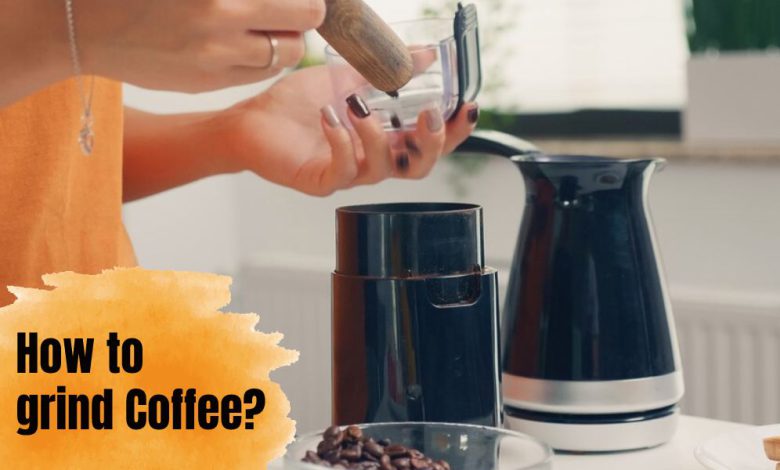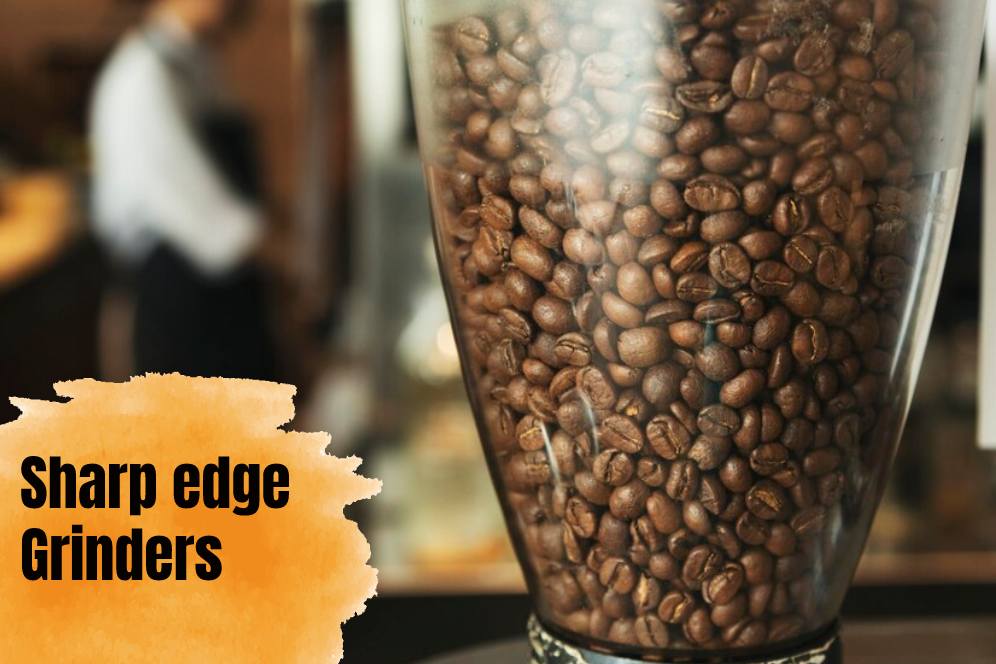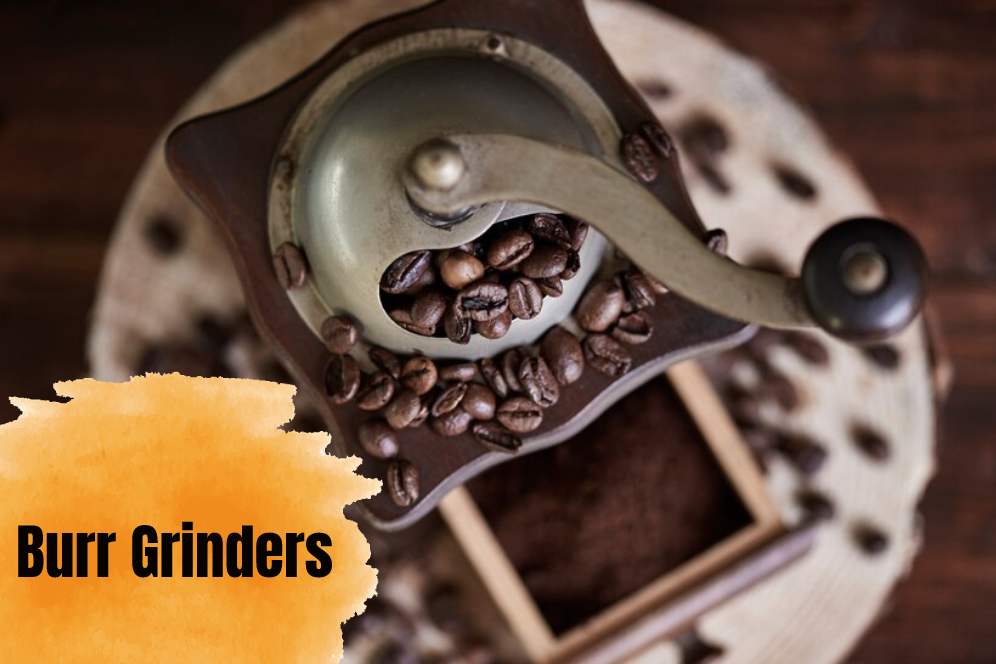How To Grind Coffee? (The Best Grinders, Pros & Cons)

For the great majority of people on the earth, a wonderful ritual to engage in first thing in the morning is savoring a flavorful cup of espresso.
Making Coffee in the morning is a calming way to start the day, from when you open the package of fresh Hawaiian espresso beans to when you take your first sip from your percolator, single-serve brewer, or dribble maker.
No matter how you choose to prepare your Coffee, the result should achieve something quite comparable to its primary purpose.
Tear apart the coffee bean that has been simmering in water to expose the bean’s interior. This will make it possible to extract the ideal balance of oils and tastes from the bean, which will then be used to make crushed Coffee.
Coffee that has been ground has a substantially larger surface area than Coffee that has been extracted from beans.
Grinding coffee beans allows water, the primary component in the extraction process, to come into contact with a greater quantity of Coffee as it is prepared. More surface area means a greater likelihood of flavor extraction and an increase in yield.
As you can see, grinding coffee beans is necessary to make a great drink and excellent cup of Coffee.
To do this, how to grind Coffee? Continue reading this article and follow our lead.
To obtain a better understanding of “how to grind Coffee,” we must first get familiar with the most effective coffee grinders as a group:
Contents
How to grind Coffee: the best coffee grinder (+ 2 Practical Ones)
1. Sharp edge Grinders
If you want to know how to grind Coffee with Blade Coffee Grinder In such a manner that:
The coffee beans are halved as the pointed edge moves around in a circle, cutting them in the process. You can “press” the power button whenever you want to wait until you achieve the required degree of contentment with the situation.
In any event, the quantity of espresso crushing and the amount of crushing is likely difficult to analyze accurately.
This is very feasible. This is because estimating the number of espresso beans that should be crushed is pretty tricky.
If you ground the beans to an excellent concentration and put them in the food processor for a more extended period, the edges of the beans may become substantially more bitter. This is another difficulty.
This may make the final shot of espresso taste stale, and it also has the potential to obliterate any other tastes there.
Edge processors are sufficient for the fundamental applications they support, but there is not much more to say about them.
PROS:
- More affordable: under $30 or somewhere in the vicinity
- Simple to Operate: just “beat” the button
- Simple to Olean: straightforward plan with just a single moving part (sharp edge)
- Simple to Store: petite size implies a little ledge impression
- Quicker: pop a few beans in and go, grinds fast…maybe excessively quick
CONS:
- Crushes Unevenly: a few beans will be powdered, some left enormous.
- Conflicting: you control grind, so it’s not difficult to crush excessively fine or excessively coarse
- No Portion Control: you need to gauge how many espresso beans you have without fail
- Overheats Coffee: will, in general, intensity espresso while crushing, antagonistically influencing the flavor
- Less Capable: can’t crush far superior to fine (see grind size specs beneath)
1. Burr Grinders
If you are interested in learning how to grind Coffee using a Blade Coffee Grinder In such a way that:
Burr Grinder and Burr Coffee Grinder Burr processors mash the beans by passing them between moving, crushing, and stationary surfaces as they are processed.
In most cases, the location of the burr may be adjusted to suit one’s preferences to get the desired level of exertion. As a result of the fact that burr processors may grind several beans at the same time, the resulting grind is far more consistent and easier to anticipate.
Two different varieties fall under the category of burrs.
The Wheel Burr is the most cost-effective option when comparing the two burr processors. In any event, the faster turn speed of the wheel may cause these processors to be considerably more disorderly and raucous.
These cone-shaped burrs are the most amazing processors on the market. The burr form spins more slowly than the wheel type, making them more peaceful and less messy.
In an identical vein, processors in the form of a funnel are less likely to become clogged up while crushing seasoned or fresh espresso beans. Even though they are more expensive, tapered burr processors are undoubtedly worth the extra investment.
Benefits:
- Crushes Evenly: A reliable struggle makes for a superior espresso mug.
- Expansive Grind Adjustments: grinds coarse to fine (some will even do Turkish)
- Jelly Flavor: won’t overheat espresso like a cutting-edge processor
Impediments:
- Stronger: many burr processors will more often than not be somewhat boisterous
- However, slower: burr processors deliberately grind your beans…it merits the stand-by,
- More Expensive: burr processors can be expensive; however, the end product will usually reflect its price
Now that we’ve covered the many kinds of coffee grinders and you’re familiar with how to grind Coffee, come and find out why it’s essential to do so in the first place:
Grinding Coffee: (The Importance)
Crushing real espresso beans before adding them to a blender ensures the freshest, most flavorful result.
An essential source of the distinctive flavor of espresso is the volatile oils that are destroyed during the roasting process.
The grinding of beans releases oxygen, which causes the oils to break down. Ground espresso may lose taste if exposed to the air for too long.
Further, the water’s interaction throughout the blending process substantially impacts the espresso’s flavor and texture.
The more surface area your toil has, the more interaction water will have with the espresso, which means it will be removed from the system more quickly.
If the quality of your labor is too high for the method of mixing, you may accidentally prevent extraction.
The water may diffuse through the espresso too quickly if your fight is too hard, leaving you with a watery, tasteless cup.
Now that you know why you can appreciate our effort to describe the process of how to grind coffee beans.
A look at some of the appropriate dimensions for coffee beans is as follows:
The right grind size.
If you’re making ground espresso, the ideal fineness (or coarseness) depends on the method you’ll use to mix it.
Espresso may be under-separated (frail) and less delicious if it is ground too coarsely before blending.
However, if the espresso is ground too fine, it will be over-extracted and bitter. Varying the grind size just a little may drastically alter the taste of your finished blend.
GRIND SIZE DESCRIPTIONS (How to distinguish your drudgery size):
- Coarse: Distinct, thick bits of espresso beans. Like weighty genuine salt.
- Medium: Gritty surface with noticeable chips. Like extremely coarse sand.
- Fine: Much smoother surface. Like table salt, perhaps somewhat better.
- Additional Fine: Coffee grains are still scarcely noticeable. Better than granular sugar.
- Turkish: Powdered without any grains. Edge processors can’t crush this fine like flour.
So, you can see that the “how to grind coffee” is essential in the Coffee industry.
In the end,
The grinding of coffee beans can be a delicate process and should only be attempted by trained professionals in specific instances. It would be advantageous to maintain concentration while you are working on it.
Next, go over to Grind Coffee bean, where, provided a barista is available, you may ask for their help, or you can review this text and grind your Coffee.
We hope you can get some helpful information from the “how to grind coffee?” post. Please inform us in the comment section below if you have any questions.







